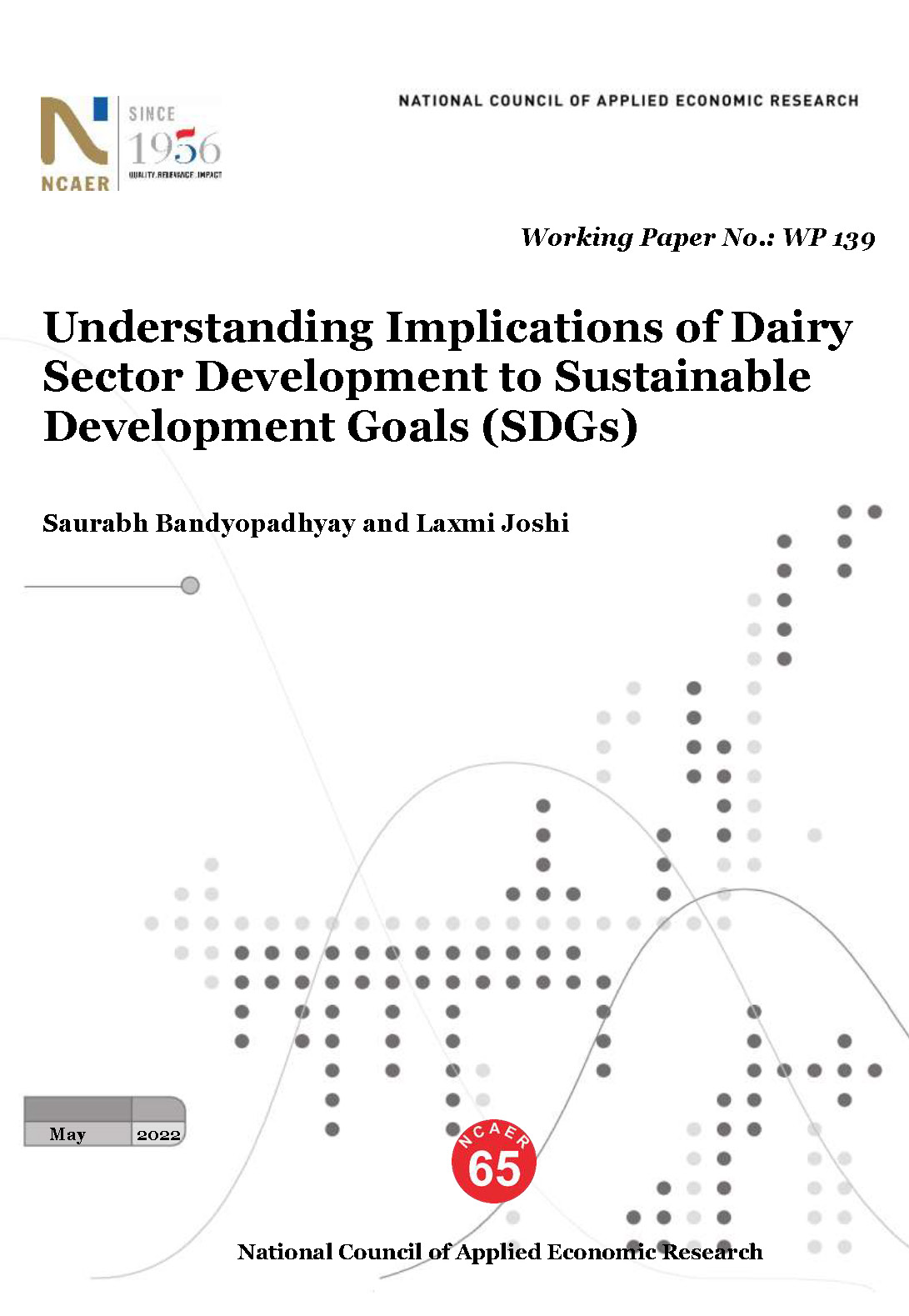Understanding Implications of Dairy Sector Development to Sustainable Development Goals (SDGs)
Saurabh Bandyopadhyay
Laxmi Joshi
May 2022
Various policy mechanisms are available to support the positive effects of the Sustainable Development Goals (SDGs) and reduce the negative outcomes of economic activities on the environment through effective interventions. To preserve the integration of dairy development strategies and practices with SDGs, this paper examines the key relationships involved in this process by major stakeholders and observes critically some of the initiatives undertaken during the phases of executing the National Dairy Plan-I (NDP-I). The paper narrates how the dairy sector can actively help achieve sustainability goals recommended by the UN resolutions using the field data received from the Socio-Economic Survey of NCAER, carried out during the year 2019 for the National Dairy Development Board (NDDB). Increased demand for dairy products adds pressure on ecosystems, biodiversity, and the dairy sector faces greater competition for capital, labour, land, water, and energy. On the other hand, increased milk production could prompt the emergence and spread of communicable diseases. In this count, NDP-I has reportedly helped expand the milk yield through effective cattle, buffalo breeding programmes, and scientific feeding methods that have enhanced the availability and affordability of feed and fodder. The programme extended the benefits of collective bargaining capacity for the landless, marginal, and small producers through the cooperative arrangement along with measures for sustaining milk production through village-based milk procurement systems (VBMPS), which has unequivocally boosted the share of the organised market and has contributed income-generating dairy activities for the poor and marginalised section of society.
Agriculture and Rural Development







